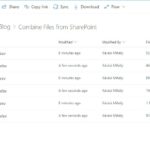When we talk about getting insights out of data to drive decisions we generally think about “our” data that we collect.
A value of our data is defined by value our decisions generate using that data. What if you could supercharge this value?
In order to do that we could enrich our data by combining it with sources that are not collected by us but by someone else.
We need to make sure that the data we use is accurate and real also that we have the right to use it. So you should make the effort to understand all these factors.
Fortunately in the UK the government and its agencies share a lot of really valuable data sets and with Power BI combining them to our existing data is much easier than previously. (I will create a blog post about it shortly.)
Using these data sources combined with our own data could uncover valuable correlations, trends and outliers. You might find that there is some forecaster information that can help you better predict your company, product, store, customer type future performance.
Examples:
I will direct you to a few sources and provide you with a link to a Power BI Report using those datasets.
The links to Power BI examples are from my other project called FactFactory, which aim to help the community to access valuable data by creating usable FactSheets out of them.
Sample open data sets in the UK:
| Type of Data | Source | Link to Source | Example |
| Crime Data | Police | Link to Source | https://factfactory.co.uk/2019/05/england-wales-crime-statistics/ |
| Population Data | Office for National Statistics | Link to Source | https://factfactory.co.uk/2019/05/england-wales-population-est-2016/ |
| Property Sales Data | Gov.UK | Link to Source | https://factfactory.co.uk/2019/05/england-and-wales-property-sales-data/ |
| Weather/Climate Data | Met Office | Link to Source | https://factfactory.co.uk/2019/05/uk-weather-data/ |
| MOT Data | Gov.UK | Link to Source | Will be available soon |
Ideas how you could use these dataset based of real scenarios:
- Population data could be used to analyse the population mix around our shops and to compare it with the products that are the most popular. You might find that different population mix affects the mix of products you should store.
- If you find can understand what is the optimal population mix that generates the highest return on investment than you can search for places that have similar mix.
- Also you can think about calculating the approximate percentage of reach for age groups and genders based on the number of registered buyers you have and the population living around your shops.
- Crime data can be used to estimate potential losses due to theft and to compare your store security measure effectiveness with the area estimated crime rate.
- Changes in the property prices in certain areas can be a good predictors of future growth.
- If you manage a large car fleet the MOT data can be useful the choose the right car models.
Conclusion
The next time you try to think about what kind of information you can get out of your data, always think about if there are any other data that you can use to add value.



